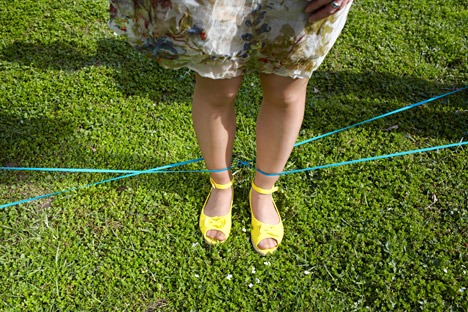
Source: Elena Pochetova
Rezinochki

Rezinochki. Source: Elena Pochetova
The key element of this game is an elasticated band (rezinochka) that is stretched between two girls while the other players jump over it. Ideally, there are three to four players. Each participant performs specific types of jumps and jump combinations, while the elasticated band is held at different heights, ranging from ankle level ("first" jump) to neck level ("sixth" jump).
If the jumper makes a mistake, she has to switch places with one of the girls holding the elastic band in place. If there are four players, the pair is swapped when both players in a pair make a mistake.

Rezinochki. Source: Elena Pochetova
This game develops spatial orientation, coordination, and attention span. It teaches children how to train, win, lose with dignity, jump higher, and be friends with others, even during moments of rivalry.
Classics (Hopscotch)
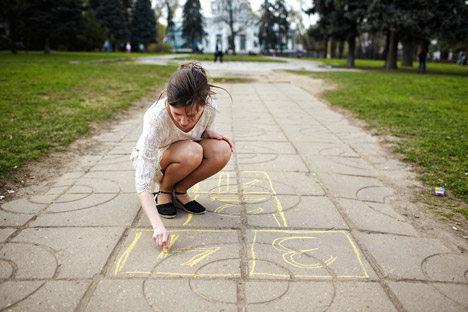
Classics. Source: Elena Pochetova
You will need chalk, an asphalt playground, and a stone (or puck). Use the chalk to draw quadrilaterals with numbers in a sequence. You can even play this game alone. The main idea is to get the stone (or puck) into one of the quadrilaterals, then jump to it using one foot or both feet, and come back using the same route.
The winner is the player who manages to make it the whole way, from 1 to 10.

Classics. Source: Elena Pochetova
This game develops dexterity, accuracy, the ability to concentrate, and knowledge of numbers (if the players are young children).
Boyars

Boyars. Source: Elena Pochetova
Participants in this classic Russian game are divided into two equal teams and line up in two rows facing each other, holding hands, 10-15 meters apart. The two teams move toward each other while repeating the line, "Boyars, we have come to you, dear boyars, we have come to you..." The dialogue ends with the phrase, "Boyars, open the gates, give us the bride forever."
The person chosen to be the bride has to run forward and try to break up the opposing team’s chain. If the attempt is successful, the player returns to his team. If not, he has to join the other team. The losing team then starts the next round. The goal is to build a chain with as many participants as possible.
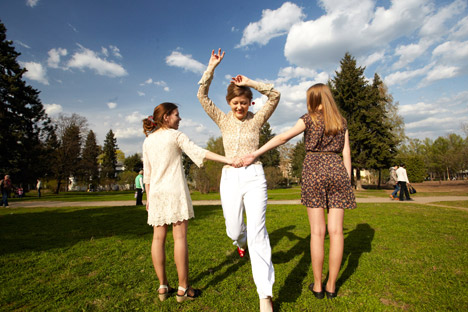
Boyars. Source: Elena Pochetova
This game develops the ability to work on a team and win in a “one against all” type of situation.
Koldunchiki (Wizards)

Koldunchiki. Source: Elena Pochetova
In this game, the players run away from the leader (a variation of tag). The leader catches up to a player and tags her. The tagged player then has to stand still and put her hands out, and any other player can run up to her and “save” her. The leader’s task is to not stray too far from the players he has already tagged and not let anybody near them.
The summer version of Koldunchiki is to run around and try to spray each other with water from bottles. Typically, everyone is soaked within the first five minutes of the game, but it’s a lot of fun.
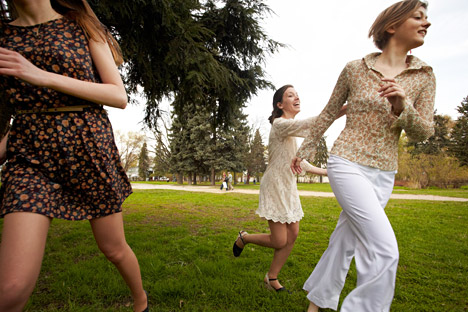
Koldunchiki. Source: Elena Pochetova
This game develops the ability to run, think quickly, and enjoy yourself.
Cossacks and Thieves (Cops and Robbers)
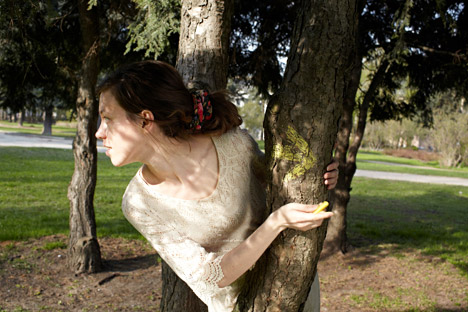
Cossacks and Thieves. Source: Elena Pochetova
Players are divided into two teams: Cossacks and Thieves. The two teams agree on the area that they are going to play in. This can be a courtyard, staircase, street, or even several courtyards. The Thieves think of a secret word. The Cossacks then go somewhere (or turn around) so they can’t see the Thieves.
The Thieves escape, leaving chalk marks (on walls, trees, curbs, etc.) to mark the direction they are moving in. The Cossacks then have to use the marks to find the Thieves. The Cossacks have to bring each of the Thieves to a prison and guard him, trying to get him to cough up the secret word.

Cossacks and Thieves. Source: Elena Pochetova
The Cossacks win when they either catch all of the Thieves or manage to get one of them to say the secret word.
This game develops basic scouting skills and navigational abilities and teaches children not to rat others out.
Vishibali (Dodgeball)
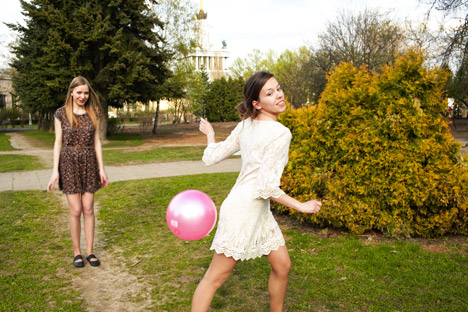
Vishibali. Source: Elena Pochetova
The Vishibali (Bouncers) - two players – stand on opposite sides of the yard. The rest are in the center. The Vishibali have to pass the ball back and forth while trying to hit one of the players in the middle. The players in the middle have to dodge the ball. Anyone who gets hit is out of the game.
Other participants can "save" the player who is out by catching the ball (but they can’t pick the ball up from the ground, or they will be out too). When only one player is left in the middle, he must dodge the ball as many times as his age. If he can do it, all the players who were out come back into the game.
This game develops the ability to dodge fast-moving objects, think of others, and endure pain.
Edible - Inedible

Edible - Inedible. Source: Elena Pochetova
All players sit or stand in a row. The lead player throws a ball to one of the participants and at the same time calls out an object. If the object is edible, the player catches the ball. If not, he bounces it away. The leader tries to confuse the player, for example, by saying "apple - melon - carrot - potato" in a row, and then suddenly saying "iron."
If a player makes a mistake and “eats” the inedible object, he then becomes the new leader. The faster the leader throws the ball and calls out the object, the more exciting and fun the game becomes.

Edible - Inedible. Source: Elena Pochetova
This game develops the ability to listen carefully and respond quickly.
Knives
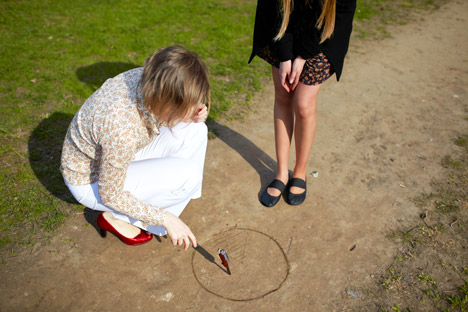
Knives. Source: Elena Pochetova
Players mark a circle on the ground. Next, the players take turns trying to throw a pocketknife inside another player’s territory in order to gain as much land as possible. The knife can be thrown over the shoulder, with a turn, from nose level and even over the head.
There are many versions of the knives game: "Land," "City," "Bench," "Grandma – Grandpa," "Tanks," "Boats," "Football," and "Sea Battle." You can stick the knife into the earth, sand, and even a wooden bench.
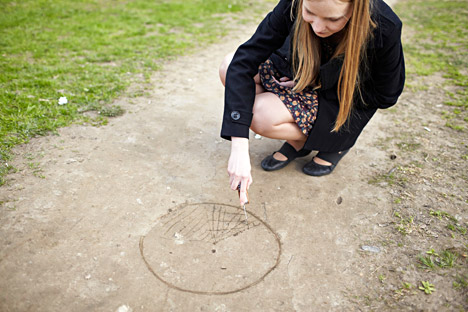
Knives. Source: Elena Pochetova
This game develops the ability to handle weapons, improves attention span, and fosters a sense of caution.
Ring-Ring
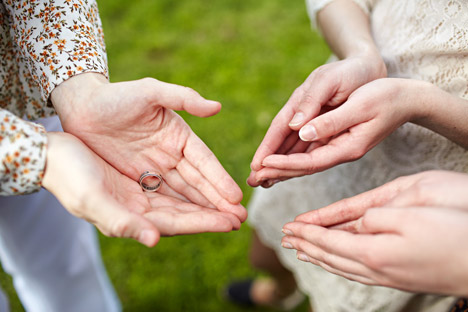
Ring-Ring. Source: Elena Pochetova
Players sit in a row and hold their hands together to form a cup shape. The leader holds a small object (such as a coin, button, or ring) in her hands. She then comes up to each player, holding her hands over the player’s cupped hands while saying the line, “I wear the ring, and then give it to someone."
The leader then has to secretly pass the ring to one of the players and say, “Ring-ring, come out on the porch!" The player who got the item then jumps up and tries to escape. The other participants have to try to catch the person with the object.
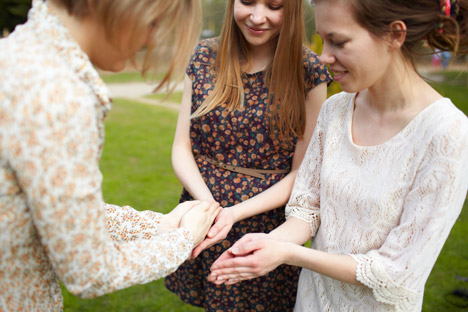
Ring-Ring. Source: Elena Pochetova
This game develops the ability to spot manipulative behavior and act quickly and decisively.
First published in Russian in Gazeta.ru.
All rights reserved by Rossiyskaya Gazeta.
Subscribe
to our newsletter!
Get the week's best stories straight to your inbox